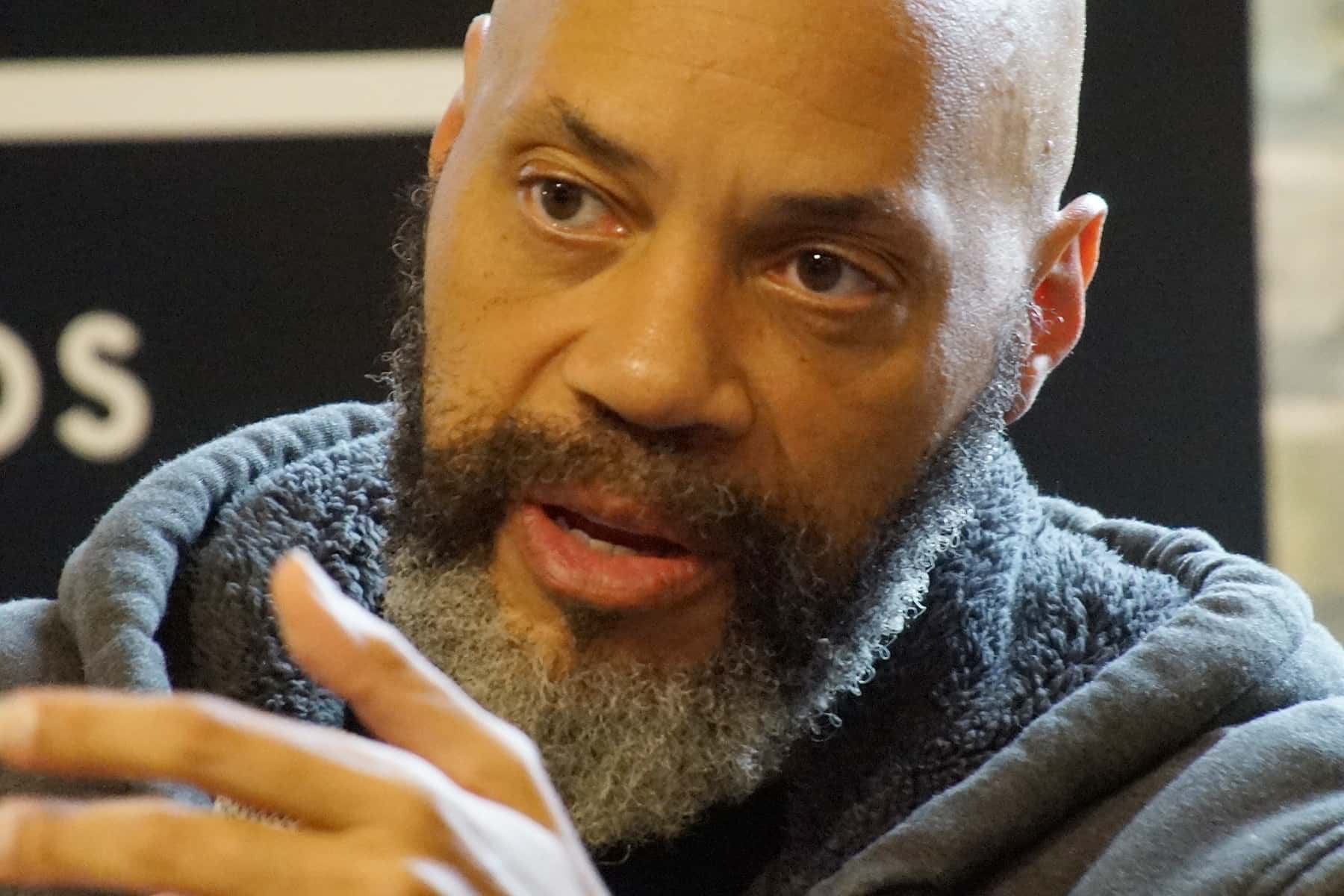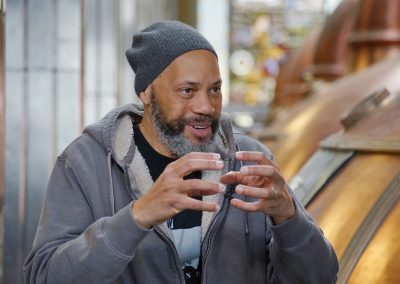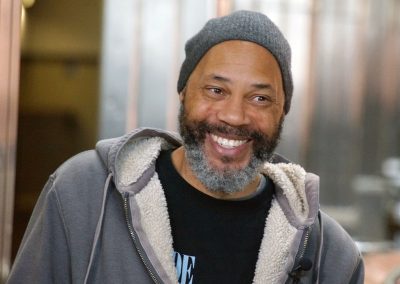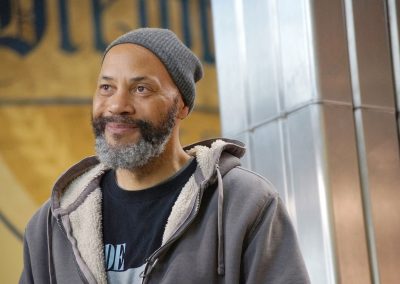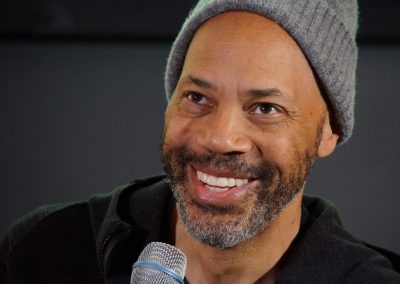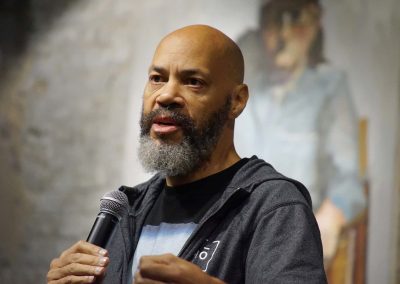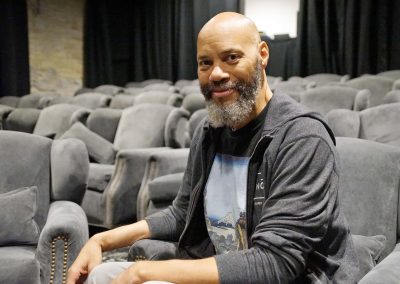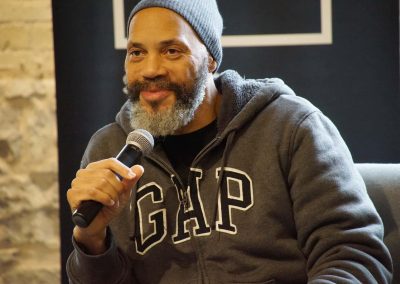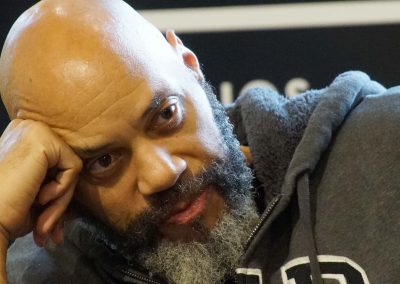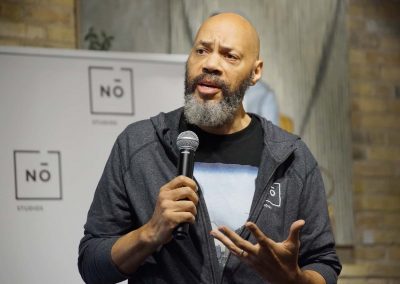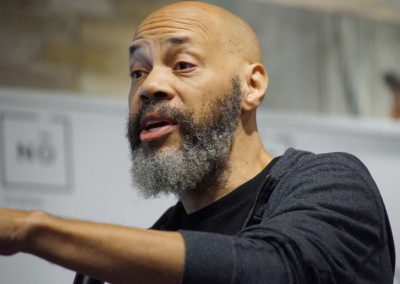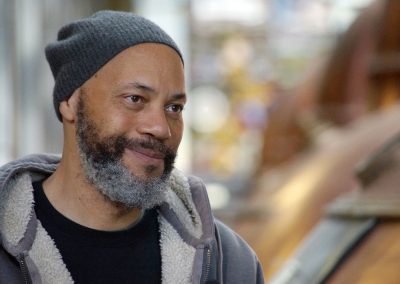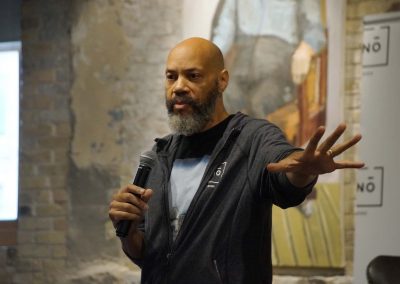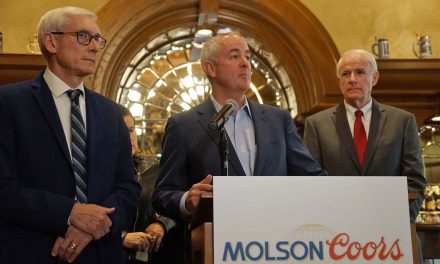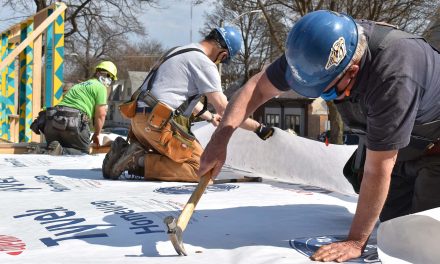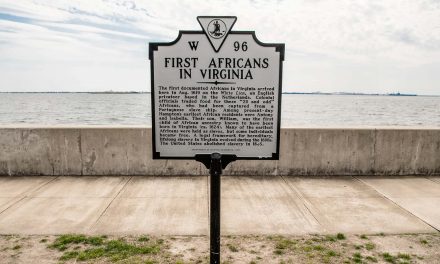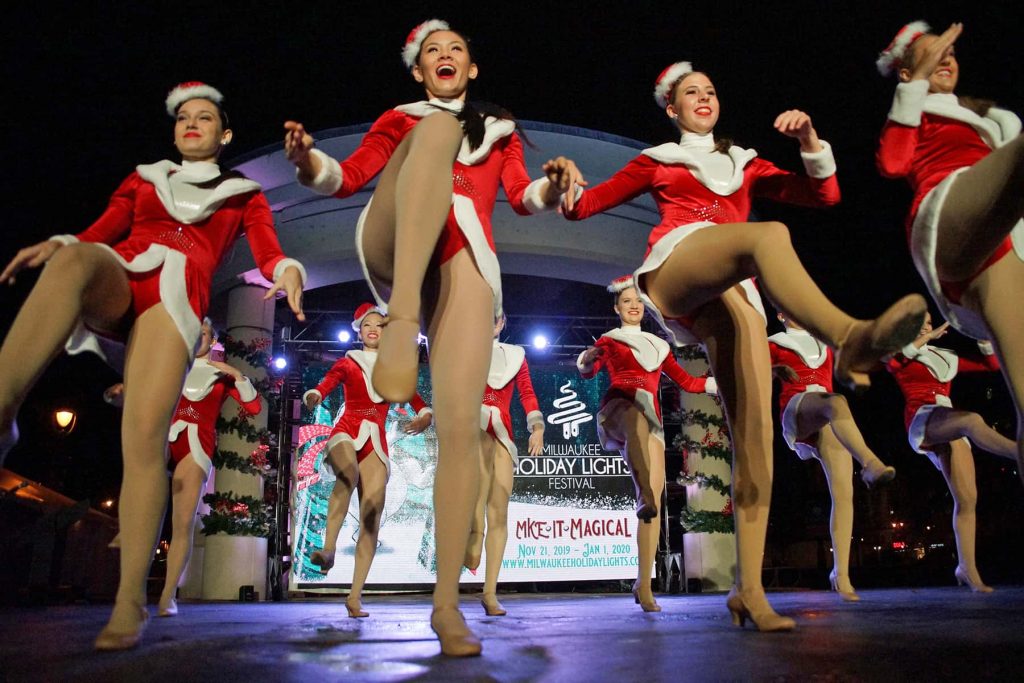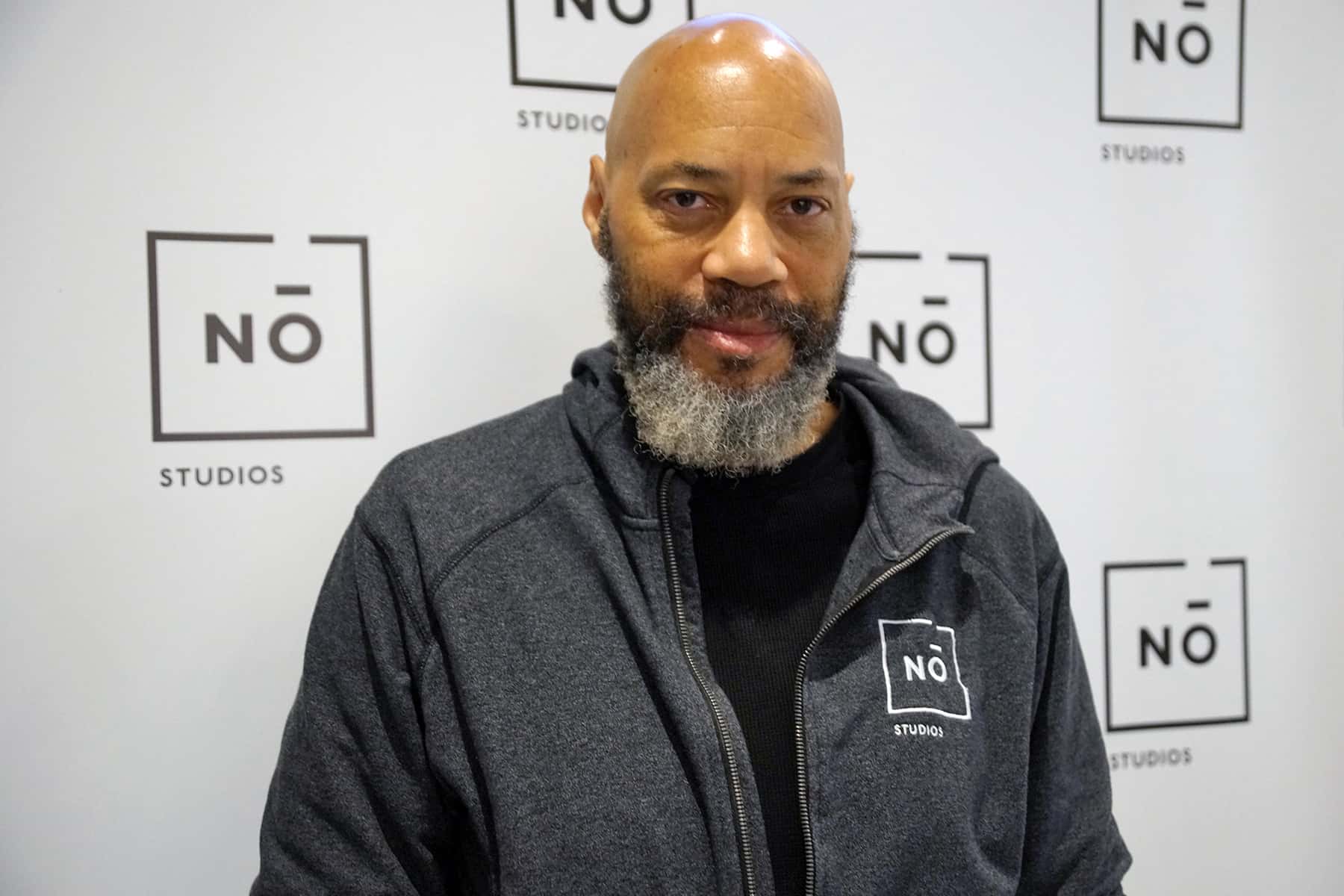
“Community service is the rent we pay for living.” – Judge Derek C. Mosley
Milwaukee-native and Oscar-winning filmmaker John Ridley kicked-off the eagerly awaited inaugural Social Justice Summit at Nō Studios on November 15. The two-day event “Art Activated” was designed to help Milwaukee residents build personal networks, encourage ongoing conversations, expand the circle of people who want to identify social issues, and match them with others who are skilled at solving those problems.
Before the showcase of events began, Ridley sat down with the Milwaukee Independent to talk about the influences of art on his life, particularly comic books, and how his experiences inspired a program to address social justice issues.
Q&A with John Ridley
Milwaukee Independent: How did you first become interested in comic books growing up?
John Ridley: Part of my interest in graphic novels when I was a kid, or part of the reason I started reading them came from my parents who were just frustrated because I didn’t read much. They saw that I liked reading comic books. They said, ‘If you read them, we will buy them.’ So it was a good bargain I think for both of us. And I got a lot of comic books. I ended up reading more than I would have if they had been standard books.
So I give credit to my parents for my interested in reading. And with comic books, every once in a while you run into words you don’t know or concepts that are outside of your direct world view. So while they wouldn’t put them in an educational category, there’s more education and more insight in them than I think back then people gave them credit for.
Milwaukee Independent: As a young boy of color, how did you identify with comic book characters who at the time almost never looked like you?
John Ridley: As to how I connected, when you’re young you don’t really think about some of those things. It’s just the way the prevailing culture is in everything you see. All the people who have any kind of import are older, straight, white males and when you’re a kid, that’s fine. There definitely came a point later, both because they started to introduce characters of color, and how I related to them, where you could feel that difference instantly. And also, just as you get older you start to realize that the makeup of the prevailing culture, the way that it’s dispensed, does not really reflect all of society, and all of the world, and things like that.
It starts to bother you, because you just realize that it’s not merely set up that way. But there’s a cascade effect of inequality and perceptions, and how one feels about himself, and things like that. So early on, they’re fine, they’re fun, and then came year by year of frustration. Not just for comic books, but with all media and all images, everything the world around you just made you feel shut out.
I think it’s hard for people to understand that. Because you talk about that sometimes and people go, ‘Oh, what’s the big deal?’ or ‘why does it matter? You shouldn’t just hire people because of their color.’ No, you shouldn’t. But all things being equal, it’s good for young girls to see women in positions of power. It’s good for kids of color to see people of color in positions of influence. It’s good for everybody. And there’s certainly enough room at the table that everybody should have a seat.
Milwaukee Independent: What inspired you to work on the American Way comic books, and what surprised you about the experience?
John Ridley: Part of it was the reaction to growing up and not seeing a person of color as the lead of a graphic novel series. Certainly as I got older they were more, and they’re more now. But when you really think about how many lead characters of color are there, they’re not as many as one would think given that it’s 2019. So for me, it was really a combination of things that I found interesting about history. American Way was set in the past. It was meant to be speculative history of what it would be like if a person of color with almost unlimited ability showed up. I think you can guess what the reaction from some people would be to that.
So, it was a reaction to not seeing characters of color. And it just seemed like a way to talk about issues that, unfortunately, are still relevant today about race, class identity, perception, power, responsibility, but not wag a finger at a modern audience and say, ‘Well, that was back in the 1960s and 1970s.’ People who are relatively aware will understand that if it was relevant then it’s relevant now. For other people, if they think I was just talking about the 1960s, it’s fine, It’s not an indictment of me, because those were things going on back in the day.
Milwaukee Independent: How is production going on the The American Way: Those Above and Those Below movie with Blumhouse Productions, and what elements of Milwaukee and social justice are you blending into it?
John Ridley: Certainly there are elements of social justice, that part is just baked into the equation. If you read the graphic novel series, it is about race and about identity. I don’t want to strip those things away. But I do want to offer them up in a visual way that is engaging, fun, and interesting – and find that balance. You look at films whether it’s Wonder Woman or Black Panther, they’re constructed for the largest audience possible. They certainly achieved that. And they did it with with a modulation of race and gender politics. They weren’t overly heavy handed with them. Just by the characters themselves, they are representative. But also as a mass product they don’t want to overdo it.
The American Way is going to be a smaller film. It’s going to be a more genre specific. To me there’s an opportunity in the history and the racism, and things like that. I look at Spike Lee did with BlacKkKlansman, which is easily one of the most successful and entertaining of his films. But at the same time, you don’t walk away from it going ‘well, gee Spike, you could have put a little bit more in there about race or about social dynamics.’ He was Spike being Spike, but found a way to do it and reach probably his largest audience with one of his best films.
Milwaukee Independent: What was it for you that connected art with social justice, and why do you think it is hard for most people to make that same connection?
John Ridley: For me, it was the stories that I’ve been telling over last bunch of years, like 12 Years a Slave, Red Tails, American Crime, and Guerrilla. All of them had elements of social justice, or people yearning for a better society and taking it upon themselves to try to enact that society in different ways. I could see how people were moved by the stories and got engaged by the stories. If you sit down and talk to people about social justice, there’s some people who try to take that phraseology and turn it into a pejorative. So if you remove the words, if you remove the specifics, and whether it’s art as dance, or music, or paintings, people can just look at the power and the impact because some of the dryer aspects have been removed.
Facts are important, statistics are important, as much as some people want to deny them even now in 2019. But art hits people in a way that facts, and figures, and statistics, and talking alone doesn’t. I’ve witnessed that. So, I try to marry those empathetic responses with a desire to move people instantly to work towards change. The great thing about doing this is it’s a one-to-one relationship. We’re sitting with people directly, we’re talking to people directly, and when they’re moved directly, it’s really easy to direct them over here, or talk to this individual because they run an organization that does this. These folks are looking for volunteers. These folks over here can give you more information.
It just seemed like a way to take that communal experience that we normally apply to art, sitting in a movie theater, walking through a gallery with other people, and mixing that around social change. That activates people as readily as possible. When they’re in that mood, when they’re in that space, when they feel that need to give into their better angels, their better selves, can we do that as instantaneously as possible? That’s what we want to do in this space at Nō Studios.
Milwaukee Independent: You took the “Nō” in Nō Studios in part from a Japanese word for artistic talent, so what has fascinated you most about Japan and how did its culture influence you?
John Ridley: I think the only thing that was really fascinating was just the timing of it all. In the 1980s, Japan was in ascension and there was so much fear that to me was misguided. I don’t consider myself special, I was like a lot of other people who would rather know about the Japanese and have a true sense of the country. Unlike other folks, I didn’t want to just assume America’s was going to succumb to some other country. As a society is seems like we’re always afraid of some foreign power. In the 1970s it was the Saudis, the 1980s it was Japan, and now it’s China. Well, we’re all still here. I feel like we’re a little more resilient than we give ourselves credit for. So that was part of it. Otherwise, I don’t go much to Asia. I think that the interest was more when I was in college, and it was part of my course of study. It was like if somebody studied to become a lawyer and then decided they wanted to become a fitness trainer. They found something else that fit their lifestyle a little bit better. It’s not that they love the law or hate the law, it was just something that they did because they thought it was going to be a big part of their life. Then later, it wasn’t as much as they thought it would be.
Milwaukee Independent: If you could send a message back in time to your younger self, and ask a question from then to your older future self now, what would they be?
John Ridley: To be honest, I don’t think I would say anything to my younger self. When I was 20 years old I made a lot of mistakes. I certainly did a million things I wish I could do over. But at the same time, that imperfect journey brought me here. So among all those things that I got wrong, maybe I got a few things right. And maybe I figured a few things out. Part of that process was taking that journey, and stumbling, and falling, and getting smacked in the head. It took all those things to arrive at a place where maybe I am just a little bit smarter, or maybe I am just a little bit more patient, or more giving. If you go back in time and tell yourself those things, which is sort of like these movies with the time travel paradoxes, would I still let myself make the same mistakes? How could I hope to replicate those situations and then learn from them? Those are the experiences that made me a better person, and motivated me to try and do more to help others be better people to have a more positive impact on the world that we live in.
- John Ridley’s Nō Studios to host Social Justice Summit with space to blend art and empathy
- A conversation between John Ridley and Felicity Huffman about “Working with Actors”
- John Ridley to write and direct film based on his superhero comic “The American Way”
- John Ridley’s comic book sequel continues journey of black hero in alternate timeline
- MKE Film to screen John Ridley’s “Let It Fall” in Black Lens lineup
- Milwaukee’s John Ridley directs upcoming Rodney King documentary
- No Studios formally launches with new tenants and membership program
- John Ridley’s Milwaukee movie studio makes “NO” the new “Yes”
- No Studios: A first look inside the downtown hub for creative arts in Milwaukee
- Academy Award winner John Ridley talks movies, Milwaukee, and diversity
- Milwaukee Film welcomes Oscar winner John Ridley to Festival board
Lee Matz

